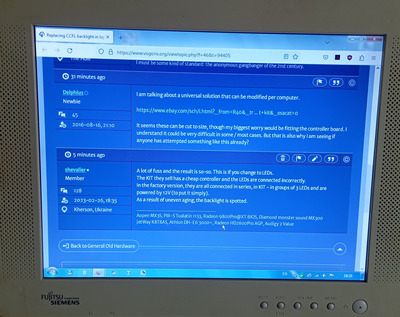It depends when the laptop was made and what kind of system it already uses to control brightness. 90s Toshibas don't really have much to control backlight brightness, just one kind of high/low setting. When I upgraded a laptop from DSTN to TFT, I also upgraded it to an LED backlight. One neat thing is that it uses the contrast adjust wheel to adjust the brightness now instead. That one had to be upgraded to LED to even fit since the LCD is out of a TV and just barely fits in the screen housing after dremeling 😀
The LED backlighting is far brighter than the CCFL so it's kind of like you can adjust it once while building it using an adjustable resistor to 5v. On laptops that have it though, you could probably re-use the brightness slider.
Something to be aware of is that even though the LEDs are usually a warm-ish white, they're not as 'warm' as CCFLs so the screen can sometimes be more 'blue' tone than the original backlight.
The older Toshibas you will need to add in a step-up voltage converter since they run the backlight from 5v. I'm not sure how it is on other brands like IBM in the 90s era though.
Upgrading my Thinkpad 240 to an LED backlight was mostly a drop-in replacement once I worked out what the Enable and Adjust signals were - that's from ~1999 and is kind of an Acer / IBM hybrid thinkpad. The enable & adjust signals match up with the LED backlight driver board I used and the inverter power supply was the right voltage, so the LED driver drops in where the inverter once was and the brightness adjustment works properly.
Something to consider with current cheapy LED retrofit kits is that they use a row of individual LEDs rather than many smaller lights like you can get with CoB rope lights now. On the 240 it's a quite slim LCD panel that uses a thin CCFL, when I put the LED backlight strip in it had lots of points of light which just seems to happen with some LCD panels. Fixed that by putting in some extra fresnel sheets from a broken LCD panel.
It's random chance though, I upgraded my Portege 3010CT to LED backlight and that's maybe thinner than the Thinkpad 240's LCD but it doesn't have the bright spots problem at all.
Enable signal - allows the inverter to be powered but disables the output. Used to avoid displaying a blank white screen if the backlight powers up before the LCD panel begins displaying. Off when at 0v.
Adjust signal - an analogue voltage signal that ranges between ~2 to 5v with 5v being dimmest and 0v being brightest. The LED drivers I use are pretty dumb and will happily run the LEDs beyond a safe current if the adjust signal is wrong. This seems to be fairly standardised after a certain point, kind of. later Thinkpads use PWM instead apparently.
I think that the LEDs showing up as points can be a fairly common complaint with these retrofits. Mostly with the older laptops like 10.4" to 12.1" from 1995 - 1999 the screens seem to work quite well with the individual LEDs instead of the CCFL without that spotlight effect. In the older laptops it should be easier overall, the CCFLs are often bigger and designed for replacement. More room to work with as well.
If anyone wants to try out an LED retrofit then I could give some pointers, I've upgraded all the ones I intend to for now.
